Woman Rider goes behind the scenes with the ladies involved in Royal Enfield North America’s BUILD. TRAIN. RACE. program to talk about building bikes, racing flat track, and women supporting women
Words: Joy Burgess
Photos: Kristen Lassen, Scott Hunter, Brandon Lajoie
It’s a seriously daunting idea…
Take a production-spec Royal Enfield Mark III INT 650 Twin and transform it into a flat track racer. Learn to go fast and turn left on a dirt track. And then go race it in American Flat Track exhibition races throughout 2020.
Each of those elements would be a challenge on its own. But when presented with the BUILD. TRAIN. RACE. (BTR) opportunity from Royal Enfield, a handful of women riders from different backgrounds were up to the challenge. And despite the unforeseen difficulties presented by a global pandemic delaying the racing, it was an exciting spectacle to finally see this group of women head out on the legendary red clay at the Dixie Speedway short track in Atlanta, Georgia.
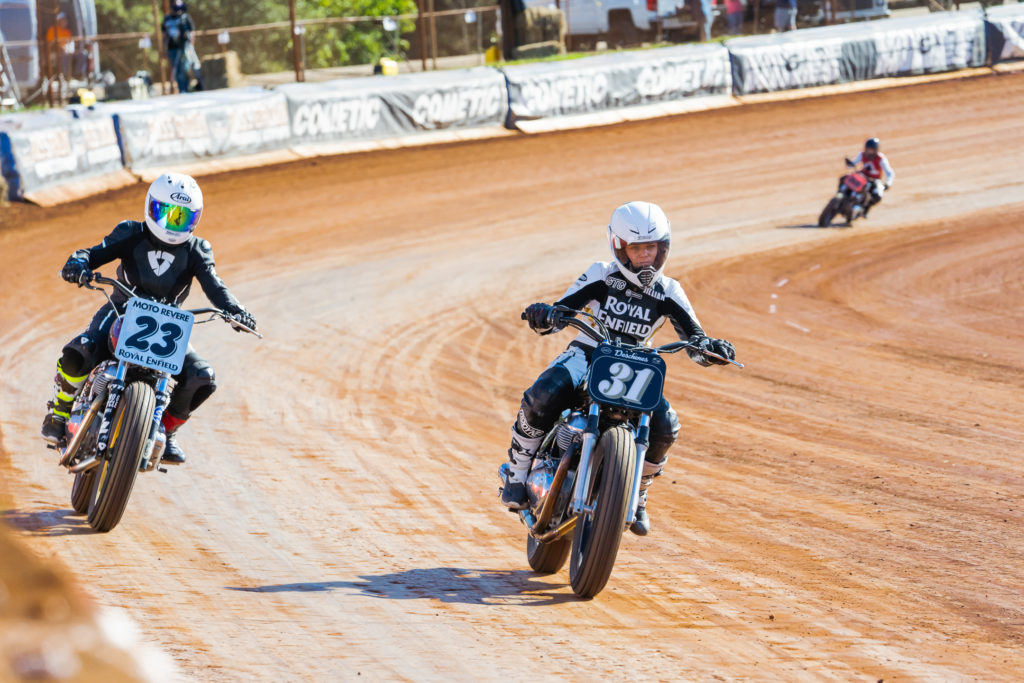
Flat track, dubbed “America’s original extreme sport” by American Flat Track, traces back to the 1920s. From the very beginning, flat track – the root of all American motorcycle racing – proved both dangerous and unforgiving of even the smallest mistakes. But the goal of the BTR program is to show women that anything is possible…
“Ever since Royal Enfield opened up offices in North America,” said Bree Poland, who’s the Marketing Lead for the Americas Region and Global Brand Manager for the Continental GT Platform, “we realized it was important to showcase and engage women in motorcycling. Over the last few years, more women have become riders and they’re finding a voice of their own. We have always highlighted women in motorcycle and believe our motorcycles are a great fit for all riders. Many of our partners, from agencies to photographers to brand ambassadors, are women, and four out of six members of the Americas’ marketing team are women, too.”
“For the BTR program,” she continued, “we initially wanted to bring together four women from various areas in the world of motorcycle and provide them with an outlet to show the ease of customizing our motorcycles, commitment in training, and development of their skills for racing. The process has evolved so much since the inception of the program that we’ve had to make modifications (in a good way). We also needed to be able to adapt during Covid-19 with the training and racing, adding additional women as substitute riders, etc.”
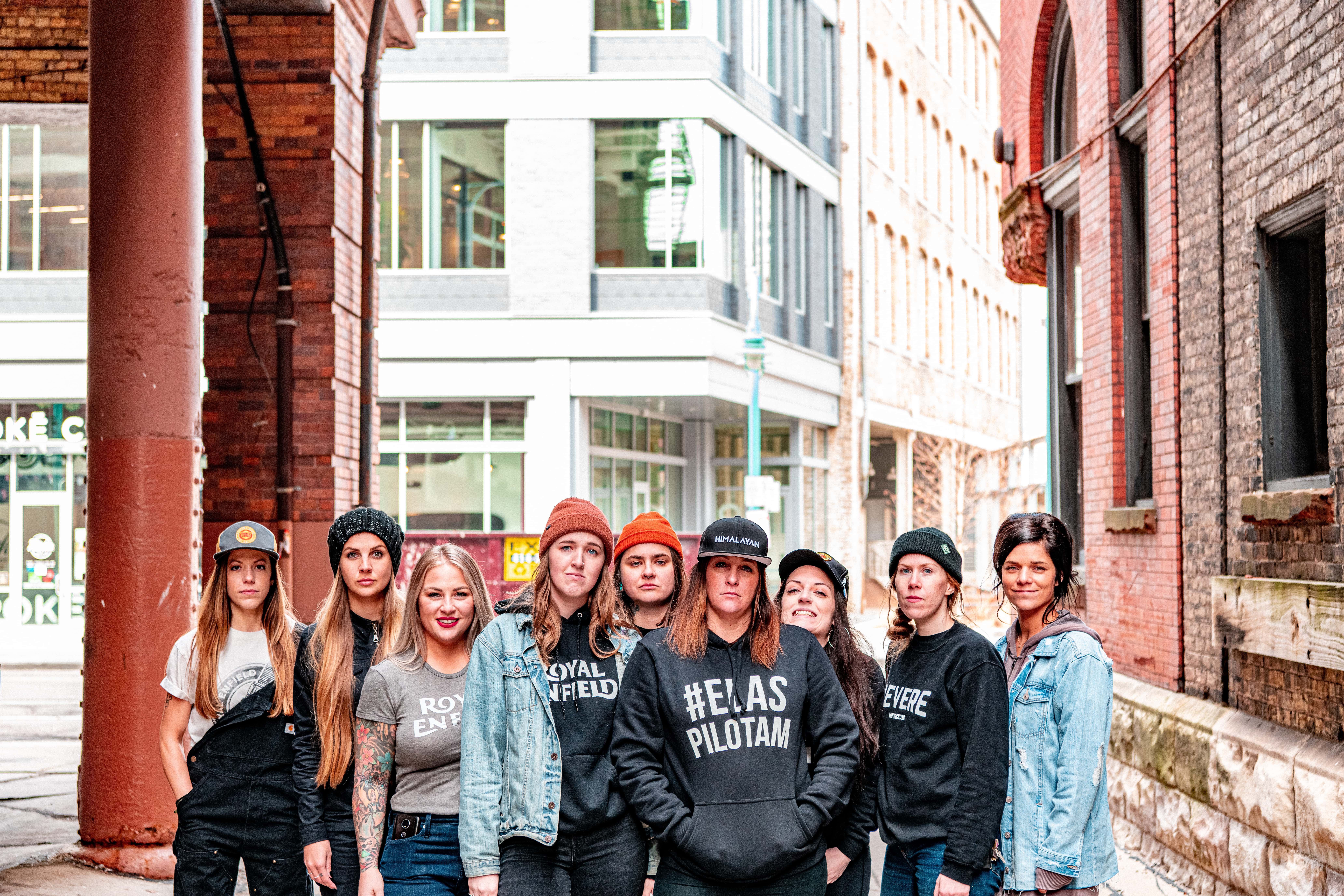
Four women were chosen for the program: Andrea Lothrop, Lanakila Macnaughton, Jillian Deschenes, and Melissa Paris. Four additional women were a part of the program as alternates or substitutes for the racing portions of the program, including Kerry Sano, Malary Lee, Trisha Dahl, and Bruna Wladyka.
The four women had from November 15, 2019 to February 15, 2020 to transform their INT 650 Twins into flat trackers. They came up with their own designs, and once approved tore down the bikes and rebuilt them according to their vision with the help of sponsors and partners. While they were provided with two days of training time with teacher-to-the-flat-track-stars – and accomplished pro racer himself – Johnny Lewis, they were required to master proper flat track techniques and racecraft before the American Flat Track exhibition race.
While the girls’ bikes officially debuted in Milwaukee earlier in the year right after Flat Out Friday was shut down due to Covid-19, the first official AFT exhibition race didn’t take place until October at the Dixie Speedway in Atlanta, Georgia, where they raced both Friday and Saturday nights. “To say I was nervous for my first race in Atlanta,” Jillian Deschenes told us “would be a complete understatement.”
But despite the nerves, Deschenes took the hole shot, pulled off some fast laps on the Speedway’s blue groove, and managed to hold off seasoned road racer Melissa Paris to take the win at the first race…and then did it again on night two.
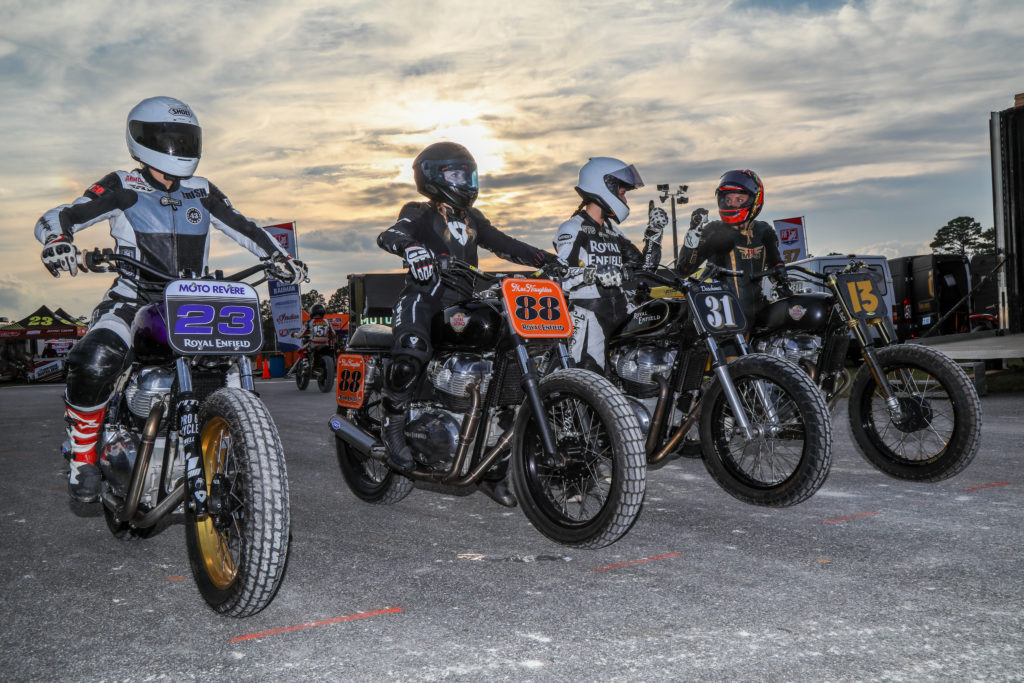
Next, the team of ladies headed to the Daytona Short Track for their second exhibition race, another double header. While Paris had struggled with the banked, blue groove track at Atlanta, she felt more at home on the Daytona ST, which while slick and slippery felt more familiar to her as a road racer. This time she had something for Deschenes, and Paris took the win on night one at Daytona, although Deschenes would come back to take the win on the second night.
“I’m a racer,” said Paris, “So winning at Daytona was for sure the highlight of the experience.” But as all four girls held up trophies and were doused in bubbly by Bree Poland, it was pretty obvious from the grins on their faces (visible despite the mandated masks) that they all felt like winners as the night ended.
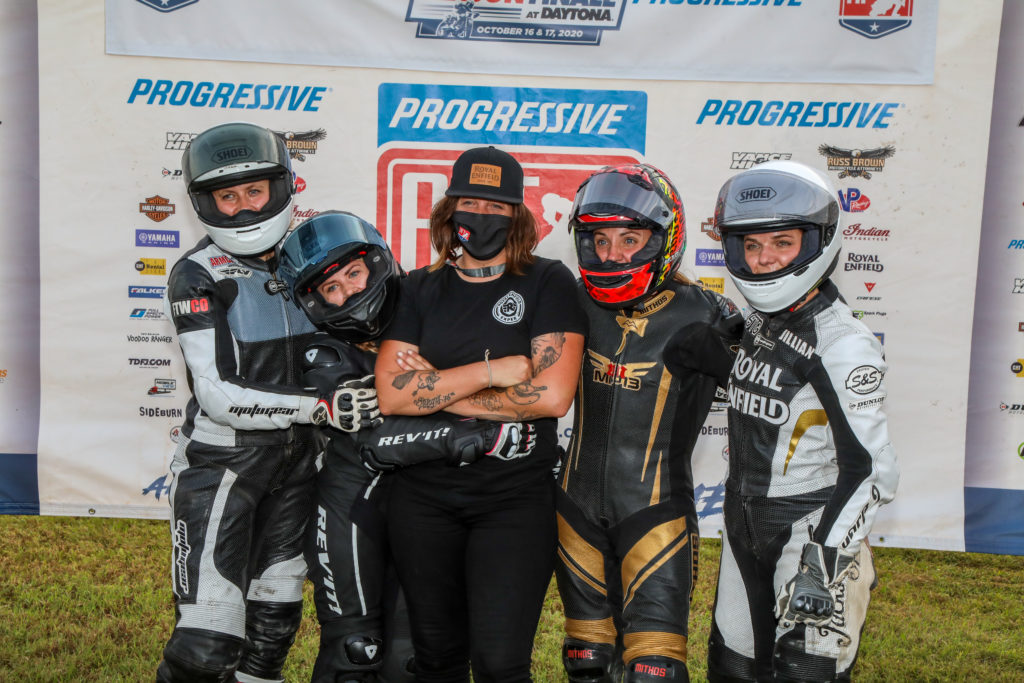
Former pro American Flat Track racer Nichole Cheza Mees, who holds the honor of the best finish a woman’s ever had in the sport’s premier class, was at the races and had this to say: “If you missed the BUILD. TRAIN. RACE. girls this season, you missed something so amazing. These women built their own bikes and race them. You could tell a lot of heart and soul went into the whole program. Congrats to all the ladies who did an amazing job!”
“I love the BTR program,” American Flat Track announcer and historian Scottie Deubler told Woman Rider. “It brought more people to our races than maybe I’ve ever seen before. One of my favorite parts was seeing the boyfriends and husbands of these lady racers get into it just as much as the ladies riding the bikes, and I love that family aspect of the whole thing that’s such a huge part of flat track.”
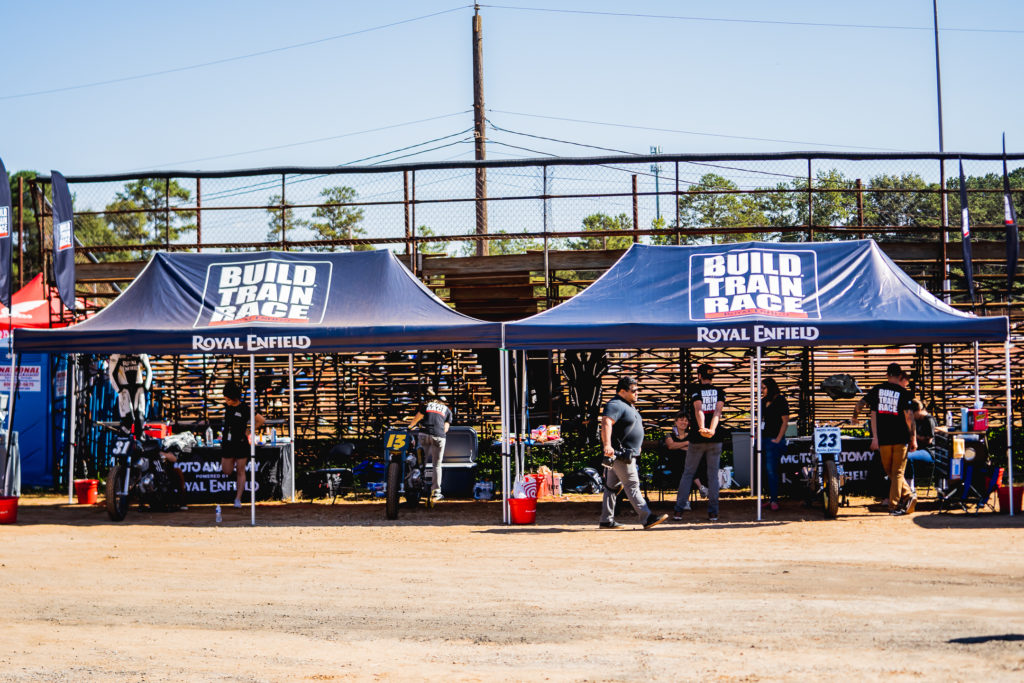
While it’s been exciting to see what the women involved in the BTR Program did in 2020, there’s more excitement coming. “This wasn’t meant to be a short-term or one-off program,” Poland told Woman Rider. “The next BTR Flat Track edition is now being launched in Brazil and we recently announced the BTR Road Race Edition (North America).”
Moving forward, Lanakila and Jillian will stay in the BTR flat track program. Melissa will be moving to the BTR road racing program as a mentor. Malary and Kerry will be joining the BTR flat track program next year. “We still need to identify two to four more amazing women for the 2021 BTR program,” Breeann Poland told Woman Rider, “and if women are interested they can reach out directly to me.”
If you’ve ever dreamed of building a bike and racing, ladies, this is your chance!
After watching these ladies race flat track at both Atlanta and Daytona, we just had to catch up to them and ask a few questions about the builds, the racing, and being a part of the program.
Jillian Deschenes
From the state of Minnesota, Jillian Deschenes – who works as a hospice nurse when she’s not at the track and has a young daughter – won the District 23 AMA Flat Track women’s championship in just her second year of racing. She won three of the four BTR AFT exhibition races this year (both Atlanta races and one at Daytona), and it was exciting watching her grab the whole shot at the Dixie Speedway and power her way to the win. Woman Rider caught up to her recently to hear more about her experience being a part of Royal Enfield’s BTR program.
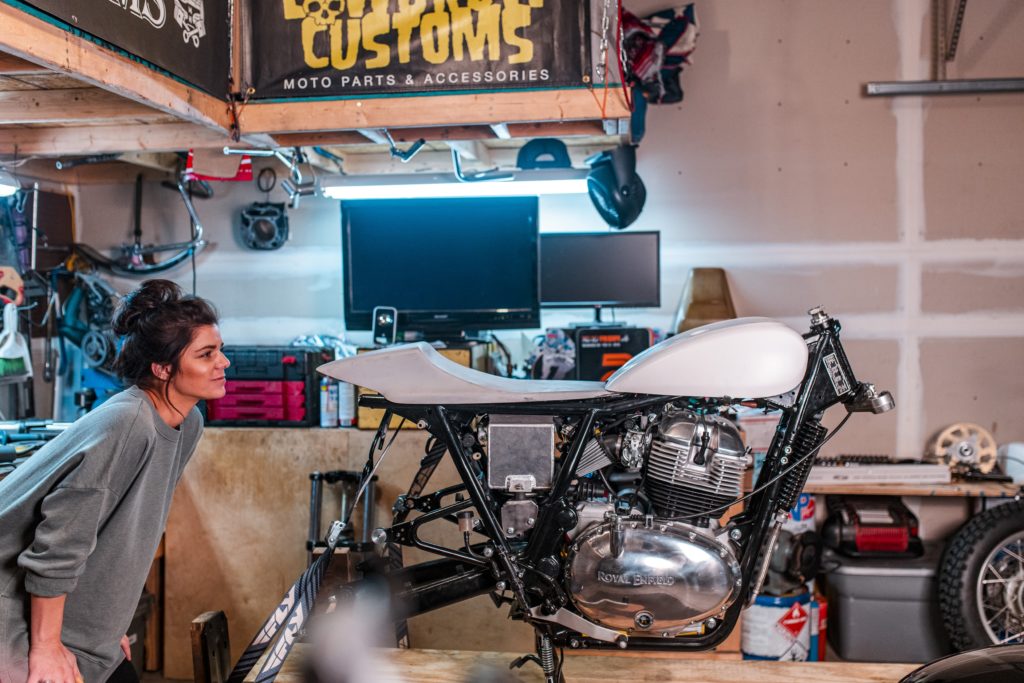
WR: Tell me a little bit about your experience with motorcycles. How did you first get started riding and how old were you when you got your start? Who or what inspired you to ride?
JD: I started riding motorcycles at the age of four. My dad brought home a vintage 50cc, and in random football, soccer and hockey gear we had laying round second hand he sent me loose. I was determined to figure it out and ride with him and my older brother. In no time my bike and I became inseparable, and my best friend and neighbor Travis and I had matching bikes. We lived on those things and rode them until they ran out of gas on a daily basis.
WR: At what point did you decide that you wanted to race?
JD: I don’t remember ever really wanting to race motocross competitively; however, after years of riding around the yard on some homemade MX tracks and trails, I followed along with my dad and older brother and raced moto competitively for a couple years in local district 23. I wasn’t really very competitive; I never felt as comfortable as I did riding at home. We gave up MX when gas prices went up. We sold our bikes, RV, and trailer and gave up motorsports when I was around 12 or 13.
WR: How did you get involved in the BTR program, and how were you feeling when you found out what you’d be doing with Royal Enfield?
JD: Royal Enfield reached out to me in the spring/summer months before the launch of the program. Originally when it was presented I really thought, ‘Me? Are you sure?’ I had only just started racing flat track competitively and was just getting back into riding hare scrambles and enduros after an 18-year break from motorsports. I had no building experience. I read through the contract several times with my fiancé and my dad and decided there was really nothing to lose and everything to gain. It was an experience I would be foolish to pass up!
WR: Let’s talk about the bikes. Walk me through how you decided to customize your bike for flat track racing. Did you have someone helping you out?
JD: The day we picked it up it was freezing out. As much as I wanted to take it for a ride around the block, I wanted to get started more. I ran the bike for the recommended amount of time, and then tear down began. I had an idea of what I wanted the bike to look like and immediately began tearing the bike apart that evening. From the very beginning my biggest and most patient supporter was my fiancé, the man who originally introduced me to the sport. I also had the support of my dad and open access to his machine shop. I had several sponsors on board as well. It was a lot of work, there was a lot of rejection and failed attempts along the way. Lots of sleepless nights.
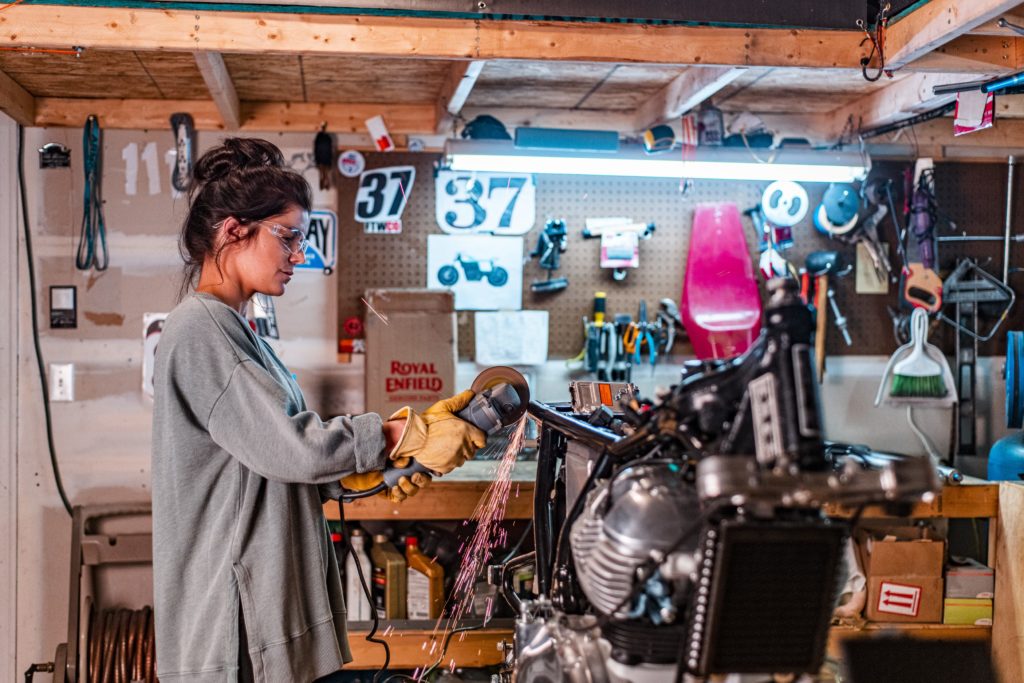
WR: Were there any challenges you encountered along the way while working on the building phase?
JD: My fuel cell was a huge endeavor in the project. Finding something that fit just so in the frame, making the fuel pump fit, working through some (what I thought was) electrical issues, but was something much simpler and related to the chain from the fuel cap grounding out the fuel pump…shoot me. (This took weeks to figure out and I lost a lot of sleep and hair in the process.) The quick change rear wheel setup was also a difficult endeavor along with the custom rear brake. Very grateful for open access to Superior Tool Grinding and the patience of my fiancé and dad.
WR: At what point did you start taking your bike out on a track and preparing to actually race it?
JD: I was really eager to get the bike running before it was aesthetically pleasing and originally had it set up for ice. I started riding the bike in February of 2020 on a friend’s small pond. He and my dad attempted to plow a small circle in it so I could do some shake down laps on it, which proved to be incredibly important as I worked out many kinks in my build.
WR: Obviously Moto Anatomy’s Johnny Lewis was a huge part of this program. Tell me a little bit about his training, how it helped you, what you learned, and how important that was when it was finally time to race.
JD: I had been following Moto Anatomy and Johnny Lewis on social media for several years before this opportunity came about. When I first heard we were going to get to train with him I was ecstatic. Training was a lot harder than I thought it would be. My endurance was poor compared to some of the other girls, and my left knee remained atrophied from a recent injury. But I was motivated and took the information he gave me home and made efforts to work on my form, my starts, and my brake control
WR: What was it like the first time you got to race each other? Were you nervous, or ready to go? If you won, how did that feel?
To say I was nervous for my first race in Atlanta would be a complete understatement. I tried to tell myself that no matter how I did, it was about having fun. It was an experience of a lifetime, and although I would love to win the first round, I was primarily just excited to be a part of the experience and debut all the hard work and effort that went into the bike on such a large platform. I ended up finishing 2nd in the Hooligan class on Thursday night in Senoia, Georgia, which was a night I will never forget. That track and that crowd was something I will cherish forever.
On Friday and Saturday in Atlanta I took first place. I felt comfortable on a groove track, but despite my experience, I went into the weekend fully prepared to get my butt whooped by a pro with a lot more seat time than me [Melissa Paris]. When I took the win, I was beyond excited for my build and for all the sponsors I had behind me along the way. The bike was turning heads; it wasn’t just a photogenic bike, it was a race bike and I was able to lay down some serious lap times on it.
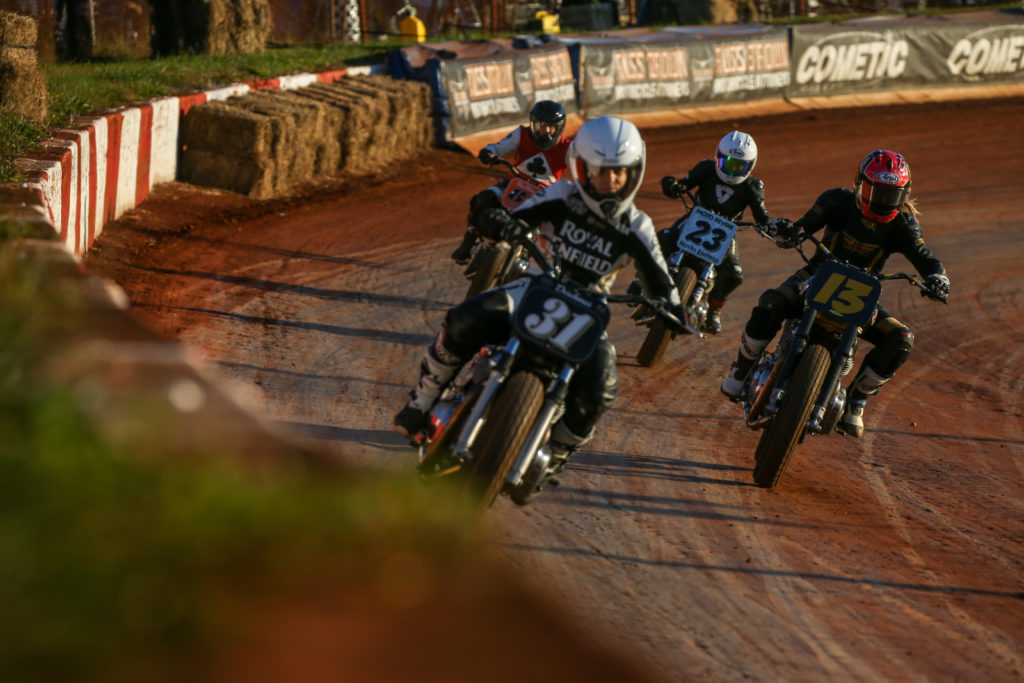
WR: Tell me about the atmosphere working with the Royal Enfield team, Johnny Lewis, and the other ladies in this program.
JD: The Royal Enfield team is a dream team. Every weekend that I have had the opportunity to be around this group, it ends up being an unforgettable weekend. The Royal Enfield team, Johnny Lewis, and the ladies of the program were incredibly supportive, quick to respond to messages, bounce ideas off one another, and offer feedback/tips and support to one another.
WR: What are a few of the best memories you have from this whole experience?
JD: One of my favorite memories of the program would be the debut of my bike in Milwaukee after Flat Out Friday was shut down. It was so hard to keep my bike a secret, and I was so excited to have it get the attention it deserved and to meet so many wonderful people.
The Senoia, Georgia, Hooligan race night was also another one of the days I will never forget. I was so proud to race competitively with those big Harleys that weekend and have the support from the crowd. I felt that true southern hospitality. It was a great experience for my first time ever in Georgia, and I would love to visit again in the future.
WR: How excited are you to do this again next year?
JD: I am excited to see where the program goes. I am grateful to have been a part of the first BTR round and would love to do it again next year if the opportunity presented itself.
WR: What advice would you give to other women out there considering building a bike or learning how to race?
JD: Don’t be afraid of failure and rejection; not everyone you reach out to and present ideas to is going to believe in you or want to support you, but don’t let that deter you or stop you from putting yourself out there. There are so many wonderful people and companies out there that want you to succeed, will cheer you on, and are willing to help you out.
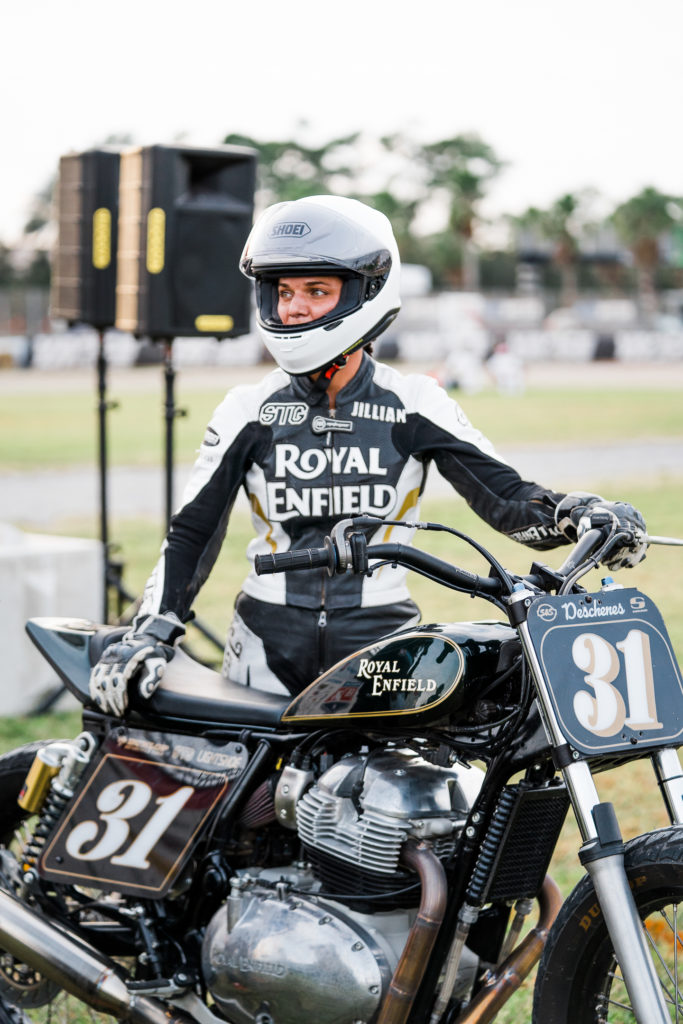
Melissa Paris
Melissa Paris didn’t grow up riding bikes and was never around bikes when she was young. It wasn’t until she was 20 years old and in college that she met a guy who had a sportbike, and after some time riding pillion decided it was time to learn to ride herself. A short time later she started competing at local club races, eventually going on to make her professional debut at the 2009 Daytona 200 and becoming the first woman to qualify for a World Supersport event the same year.
She’s raced in multiple 24-hour World Endurance Events, the Spanish CEV championship, and in Moto America. Melissa spends time training by riding both flat track and motocross, and she’s also mother to the one of the coolest two-year-olds on two wheels, Hawk.
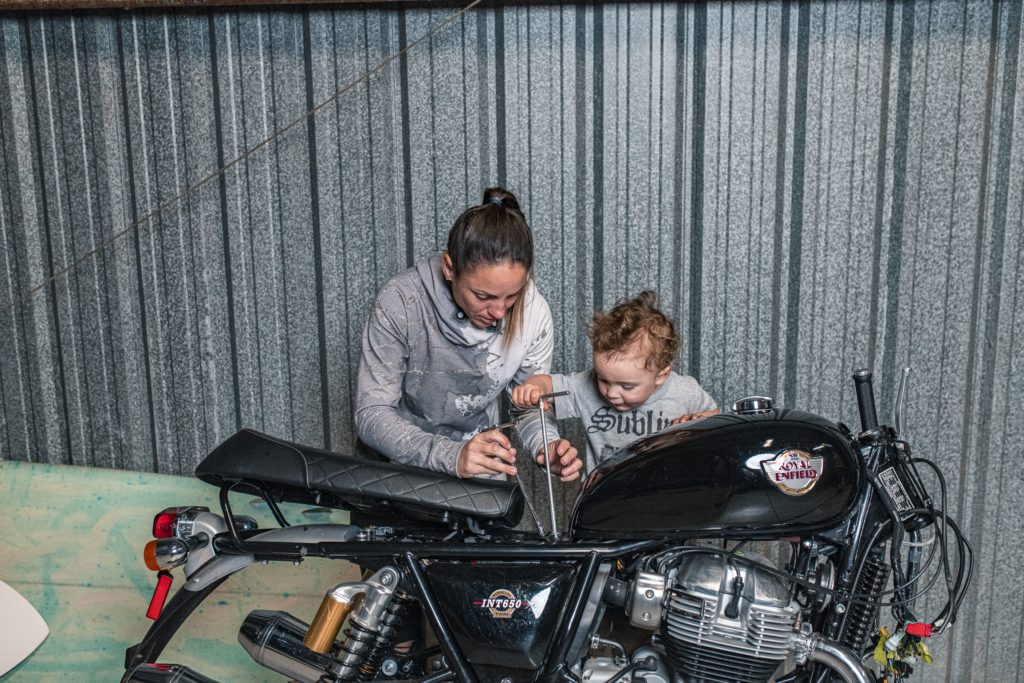
WR: Tell me a little bit about your experience with motorcycles. How did you first get started riding and how old were you when you got your start? Who or what inspired you to ride?
MP: I grew up playing more traditional sports. No one in my family was into riding motorcycles, other than an ill-fated afternoon on an ATC 70 my dad’s friend left at our house one day. When I was a freshman in college there was a hot guy that lived in my dorm that had a sportbike. I asked him to take me for a ride, we started dating, and soon I learned to ride. I used a student loan to buy a super beat up old Yamaha FZR 600 and spent every spare moment I had in the canyons around San Diego.
WR: At what point did you decide that you wanted to race?
MP: My start riding was in the canyons with a really cool group of friends. We treated Palomar Mountain like our own personal race track. Luckily, some really great friends got me to the race track before I became a statistic. I think I knew I wanted to race as soon as I turned my first lap around a race track.
WR: How did you get involved in the BTR program, and how were you feeling when you found out what you’d be doing with Royal Enfield?
MP: I’ve actually know Breeann Poland from Royal Enfield for years. We met when I was roadracing and she was working in the AMA paddock. I’ve kind of goofed off on flat track bikes a little here and there. I was helping out at a demo event and the first thing I said after riding the INT-650 was “I bet this thing would make a super fun flat track bike.” So when she told me that she was starting the Build Train Race program I was beyond stoked.
WR: Let’s talk about the bikes. Walk me through how you decided to customize your bike for flat track racing. Did you have someone helping you out?
MP: You know, over the years I’ve built or helped build a few of my road race bikes and I feel like I approached this build in the same way. My first priority is always suspension…so I called up my friends at Ohlins to see what the options would be. They laid out a few different routes I could go, and naturally I went all in with their complete 43mm conventional fork in their signature gold color. That ended up being the jumping off point for the whole rest of the bike. It was like the book If You Give a Mouse a Cookie… The forks meant I’d need some aftermarket clamps, so I called up my friend at Evol Technology and went with a beautiful set of gold, adjustable clamps, and then it was on to wheels, brakes, exhaust, bodywork etc.
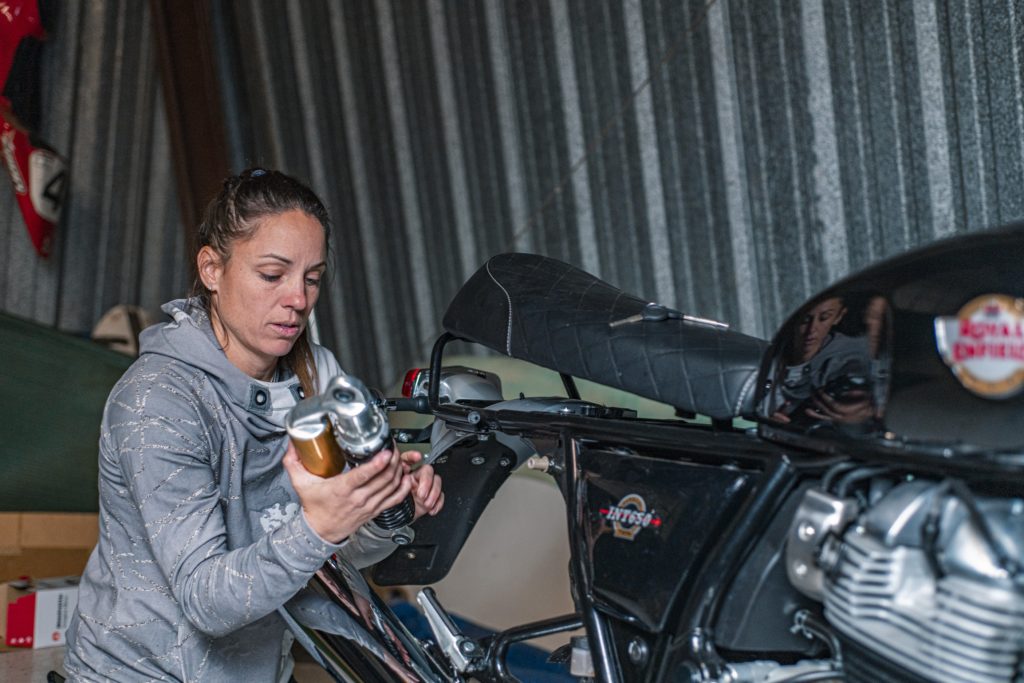
WR: Were there any challenges you encountered along the way while working on the building phase?
MP: I definitely ran into a hiccup along the way. The one thing I knew I was going to need big help with was fabricating a tank. I knew that project was way above my pay grade. Unfortunately, the person I had enlisted to help me sort of dropped the ball, which might not seem like a big deal but it actually ended up affecting my whole plan for bodywork. In a panic I called my friend Kent at Airtech. He was super helpful and let me bring my bike over to his factory and we pretty much went through his inventory until we found something that would work. At this point there was big time crunch time to get the project finished and he was super cool, showing me some cool tricks and letting me borrow some machine tools so I could knock out all the last-minute things I needed to do to make sure the bike was ready to race.
WR: At what point did you start taking your bike out on a track and preparing to actually race it?
MP: The day before the shippers showed up to take my bike to Milwaukee I was able to turn about 10 laps in my backyard. But other than that, I didn’t get to ride it until our first official training with Johnny Lewis at the S&S Speed Ranch.
WR: Obviously, Moto Anatomy’s Johnny Lewis was a huge part of this program. Tell me a little bit about his training, how it helped you, what you learned, and how important that was when it was finally time to race.
MP: Having not just an experienced racer but an experienced instructor on hand to help me get up to speed was awesome. Although I had ridden a little bit of flat track before, I had never done it on anything but a tiny track on much smaller bikes. He had great advice and was super encouraging.
WR: What was it like the first time you got to race each other? Were you nervous, or ready to go? If you won, how did that feel?
MP: Our first race in Atlanta was definitely a big challenge for me. I think I felt a bit frustrated because with it being a banked track with a blue groove, I felt like a complete fish out of water. I’d never experienced riding on a track like that and I felt like it was so different from what we had trained on. Mostly I was just bummed because I was hoping to be able to make more of a race of it with Jillian, but with her experience on those types of tracks and how fast she is, I had nothing for her!
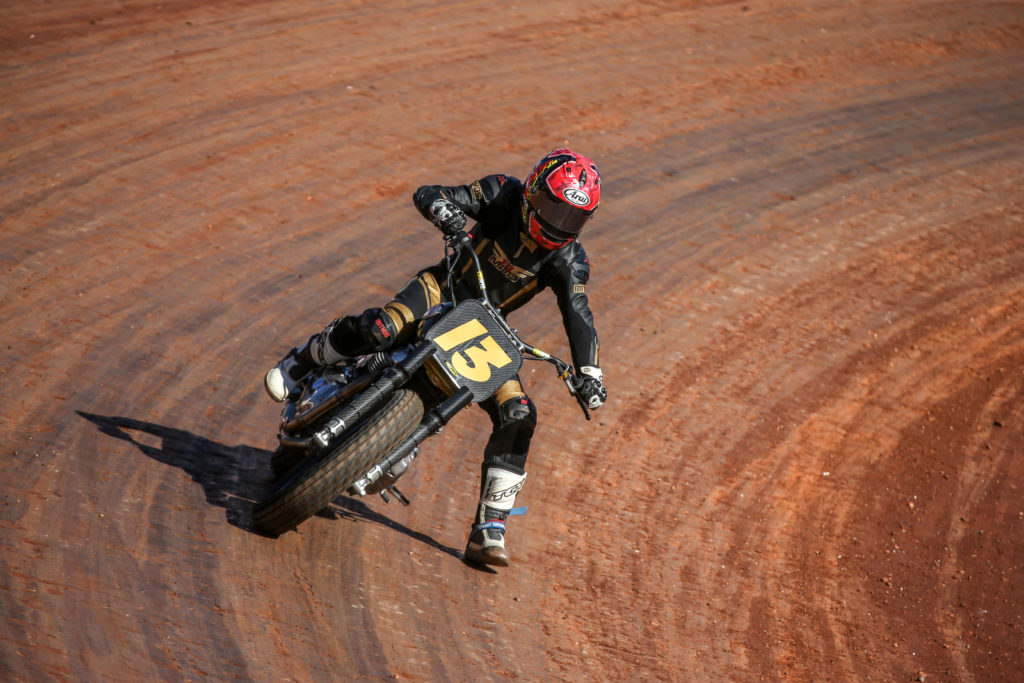
WR: Tell me about the atmosphere working with the Royal Enfield team, Johnny Lewis, and the other ladies in this program.
MP: I really enjoyed getting to meet other like-minded girls who were game to try something new. Especially, the girls who filled in [for the ladies unable to attend] were really rad. They just jumped right in trying to figure it out and I was super impressed with each and every one of them.
WR: What are a few of the best memories you have from this whole experience?
MP: I mean…I’m a racer, haha. So winning in Daytona was for sure my highlight!
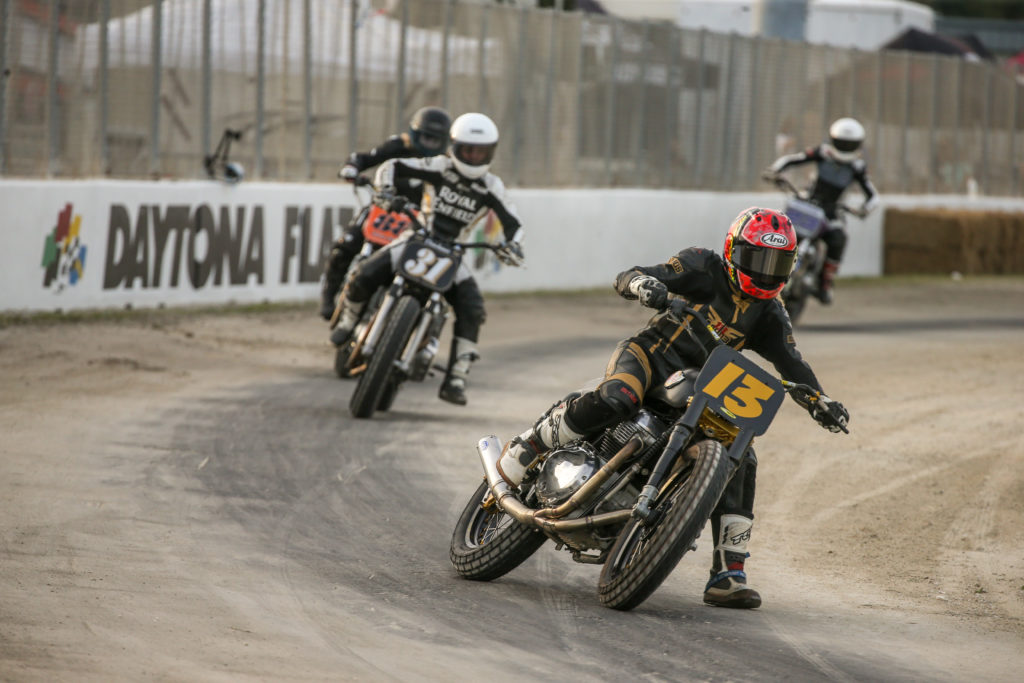
WR: How excited are you to do this again next year?
MP: For me, I’ll be moving over to the road race side of Build Train Race and helping the next crop of girls come through the program. I’m really excited to meet a bunch of ladies who are pumped to race.
WR: What advice would you give to other women out there considering building a bike or learning how to race?
MP: My advice to women who want to build or race has always been…just do it. Dive in. Figure it out. Make mistakes. Learn. Have fun.
Lanakila Macnaughton
Originally from Portland, Oregon, although she recently moved to Boise, Idaho, Lanakila Macnaughton is photographer and avid motorcyclist. From a young age, she’s been involved in outdoor sports and started to document those experiences through her photography. Once she started riding motorcycles in her 20s, she turned her lens towards the many facets of the motorcycle community, documenting motorcycle culture and eventually starting The Women’s Moto Exhibit, a traveling photo exhibition that brings female motorcycle culture to the forefront. She’s also the co-founder of the Paradise Road Show and the Dream Roll, which is the only women’s-only motorcycle camp-out known for uniting women from around the globe through adventure and motorcycles.
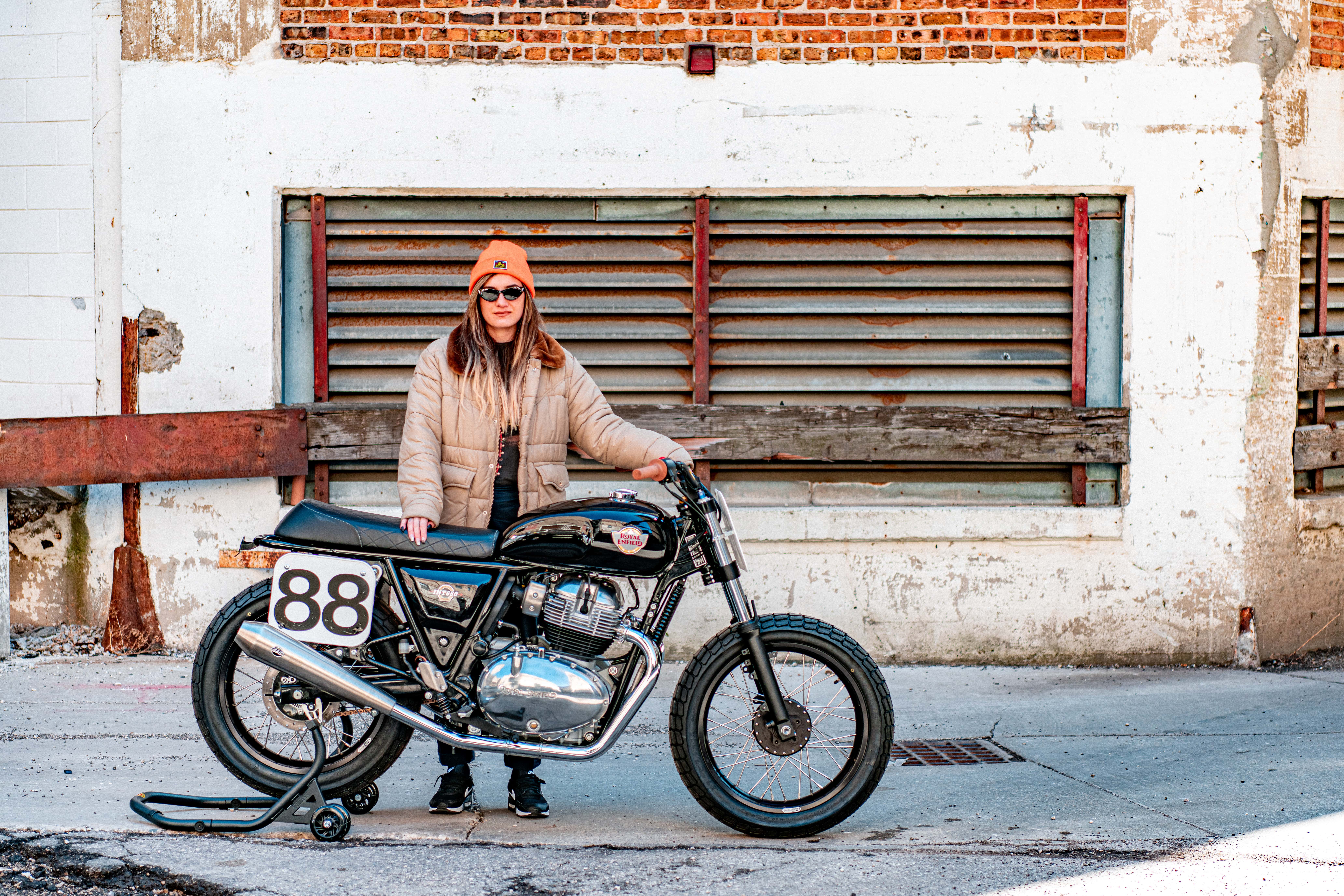
WR: Tell me a little bit about your experience with motorcycles. How did you first get started riding and how old were you when you got your start? Who or what inspired you to ride?
LM: I started riding when I was 23, I think. I was newly sober and motorcycles were a great way for me to find a new kind of ‘high.’ I was inspired after following a pack of friends who rode to a waterhole outside of Portland. I drove my car and was so envious of them riding in front of me. They looked like they were having so much fun and I wanted to feel what they were feeling.
WR: At what point did you decide that you wanted to race?
LM: I used to race Cycle Cross – a type of road riding/mountain biking series with obstacles. I’ve been a big mountain biker for 10-12 years. My whole family is obsessed with riding mountain bikes. After I had been riding for a few years I kinda got tired of just the road. I love long motorcycle road trips but the day to day riding in the city was not that exciting anymore. I started to follow someone on Instagram who rode dirt bikes, and I missed the trails. I eventually bought a dirt bike and started learning how to ride. I was one of a few ladies in my area that were new to riding dirt bikes so I would pick them up in my sprinter van, load their bikes up, and we would head out.
I think my experience mountain biking has transferred to riding dirt bikes and vice versa. I eventually started racing XC races but broke my wrist in the first season. I’ve done some vintage MX racing, too, which is so fun. Flat tracking was something I always wanted to do but didn’t have the means of making it happen. I had been to several races and taken some practice laps. I raced at Flat Out Friday – that’s where I met Bree! Flat tracking, just like all other activities with motorcycles, is absolutely addicting. I made huge strides in the BTR Program, building confidence and trusting my bike and my abilities.
WR: How did you get involved in the BTR program, and how were you feeling when you found out what you’d be doing with the Royal Enfields?
LM: I photographed Bree Poland for The Women’s Moto Exhibit – Bree sent me to the Himalayas! It was the most incredible experience ever. I think Bree knows I’m crazy and I will take pretty much anything she throws my way. Initially when she asked me, I just couldn’t believe it really. She has been so awesome and generous since I’ve met her, and being a part of this program was just too good to be true. I was nervous; not going to lie. I know a lot of people race 250 flat track bikes so a 650 seemed BIG! But honesty, I feel so balanced and in control on my INT650…I felt more comfortable on that bike then a light 250 bike.
WR: Let’s talk about the bikes. Walk me through how you decided to customize your bike for flat track racing. Did you have someone helping you out?
LM: My main focus for the bike was just prioritizing the most important parts, the geometry and performance of the bike. I teamed up with a builder named Sean who was working at Bridge City Cycles. Sean is a racer and absolutely psycho about measuring and analyzing and tweaking and strategizing how to get the most out of the bike. I’ve been a producer for almost 10 years, so the build was something completely new to me but something I felt I could achieve with someone who was experienced. The overall look of the bike was just to go minimal and classic…nothing over the top.
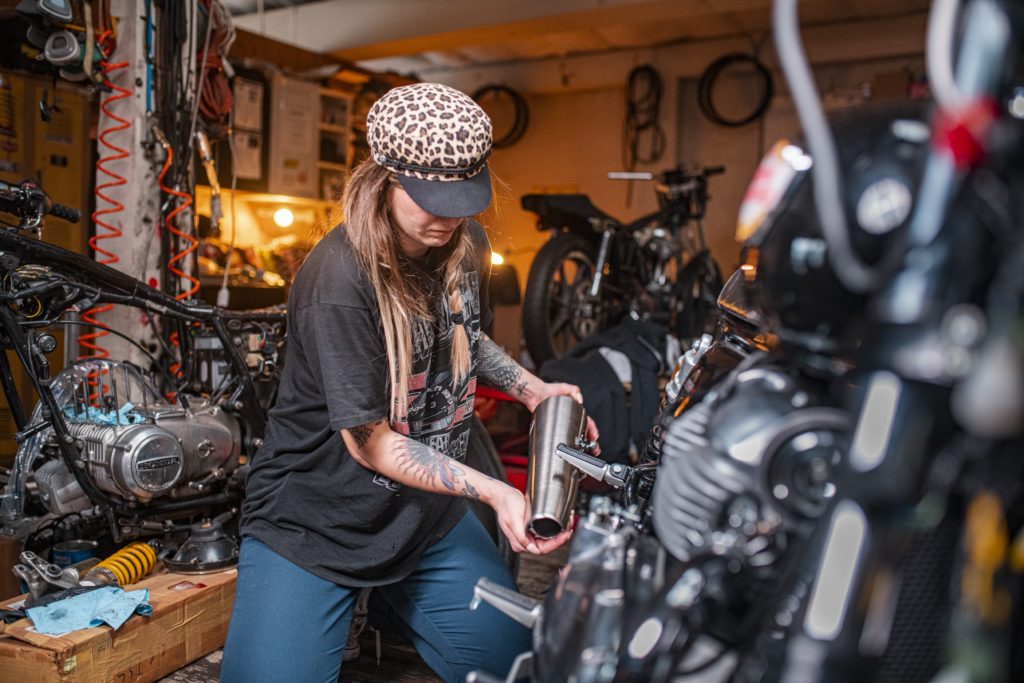
WR: Were there any challenges you encountered along the way while working on the building phase?
LM: Some parts were a little difficult to get. Since it’s such a new model it was difficult finding exhaust systems for the bike that would fit without having to do something custom. Other than that, there really wasn’t anything that big.
WR: At what point did you start taking your bike out on a track and preparing to actually race it?
LM: We started practicing in July. That was my first time being able to take lap after lap after lap.
WR: Obviously, Moto Anatomy’s Johnny Lewis was a huge part of this program. Tell me a little bit about his training, how it helped you, what you learned, and how important that was when it was finally time to race.
LM: Johnny showed me how to adjust my body positioning, when to time my throttling, how to trust my speed into the corner. My main focus when I was at the races was to focus on my arm position and body position the seat. As Bree calls it, “ Crack to Crack.”
WR: What was it like the first time you got to race each other? Were you nervous, or ready to go? If you won, how did that feel?
LM: I was just excited. Not really nervous, just ready to get out there and have fun with the other ladies.
WR: Tell me about the atmosphere working with the Royal Enfield team, Johnny Lewis, and the other ladies in this program.
LM: The Royal Enfield team is exactly that – A TEAM! Or better yet, a family. Everyone is extremely supportive, helpful, and stoked to be there. I’ve met pro racers before and some tend to not give you the time of day. Melissa and Jillian are the exact opposite of that…super down to earth and real. Melissa is a straight shooter, determined, sweet, and will give tons of really good advice. Jillian is just a goddam sweet heart. Her enthusiasm for racing and dedication is really inspiring, and she’s fast as FUC*!
WR: What are a few of the best memories you have from this whole experience?
LM: My favorite part of the entire program was the practice day before Georgia. We practiced at a small race track – the vibes were mellow – people were laughing, and it wasn’t super serious. We got SO many laps in and I feel like I really progressed that day. I also loved the track. It was sticky, not to wide and really comfortable for me to slowly progress.
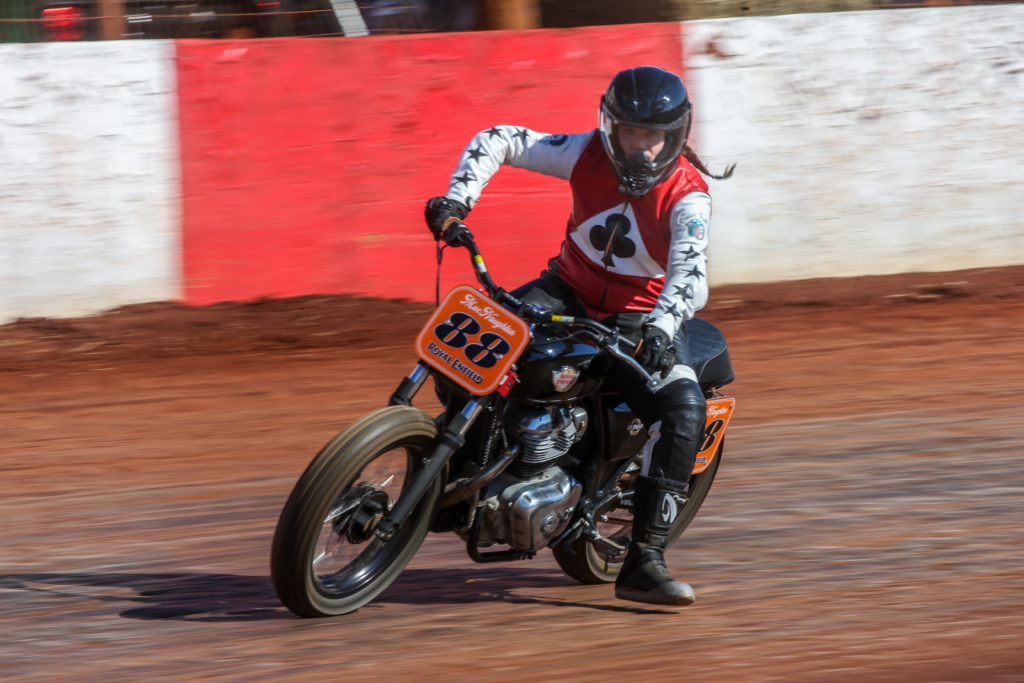
WR: How excited are you to do this again next year?
LM: Bree just messaged me that she is sending the bike back to me! All I want to do is race in local races here and then blow everyone out of the water next year. Lol! A girl can dream! But really just excited to continue to grow, learn, get more comfortable and, hopefully, really get some sliding action in.
WR: What advice would you give to other women out there considering building a bike or learning how to race?
LM: My suggestion is just to DO IT! Don’t hesitate, question yourself, or feel like you are in over your head. Just send it and make it happen. Mistakes are what make us learn and be better. Your build will have ups and downs, things will happen, and it’s how you deal with those scenarios that will make your bike more than just a bike, but something that’s a part of you. Racing is scary at first; take it slow…don’t go full psycho right out the gate. Slow growth is good growth. Making micro adjustments each time you’re out there will eventually lead to huge growth. Build that inner confidence; it will show out there.
Thank you so much for the feature and time. BTR is pretty much the coolest thing out there for women in motorcycles. I hope it’s here for a long, long time so more women can get the opportunity to be a part of the program or be inspired by the women in it!
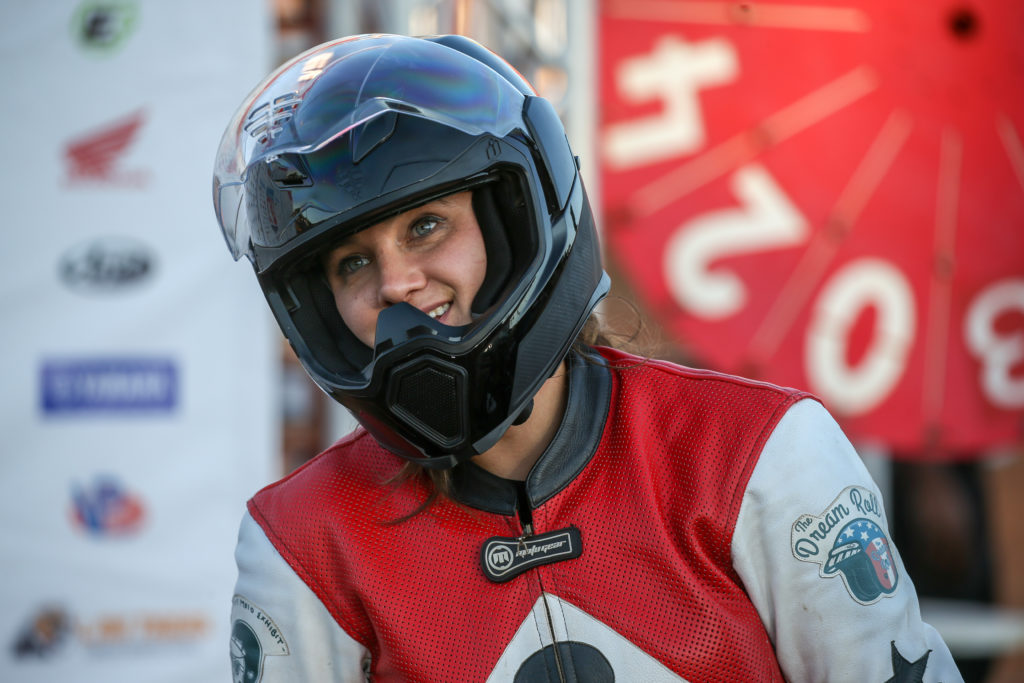
Malary Lee
Malary Lee, originally from Des Moines, Iowa and currently residing in Austin, Texas, filled in for Lanakila Macnaughton at Daytona, since Lana was unable to attend due to a schedule conflict. She began her life on two wheels about nine years ago, taking every chance that’s come her way in the sport from riding 420-foot sand dunes in the country of Morocco to racing in the 2017 X-Games. Malary’s had a bit of flat track experience, previously racing events like The One Show Women’s Race and Mama Tried’s Flat Out Friday, and she’s also passionate about endure racing, motocross, and street riding.
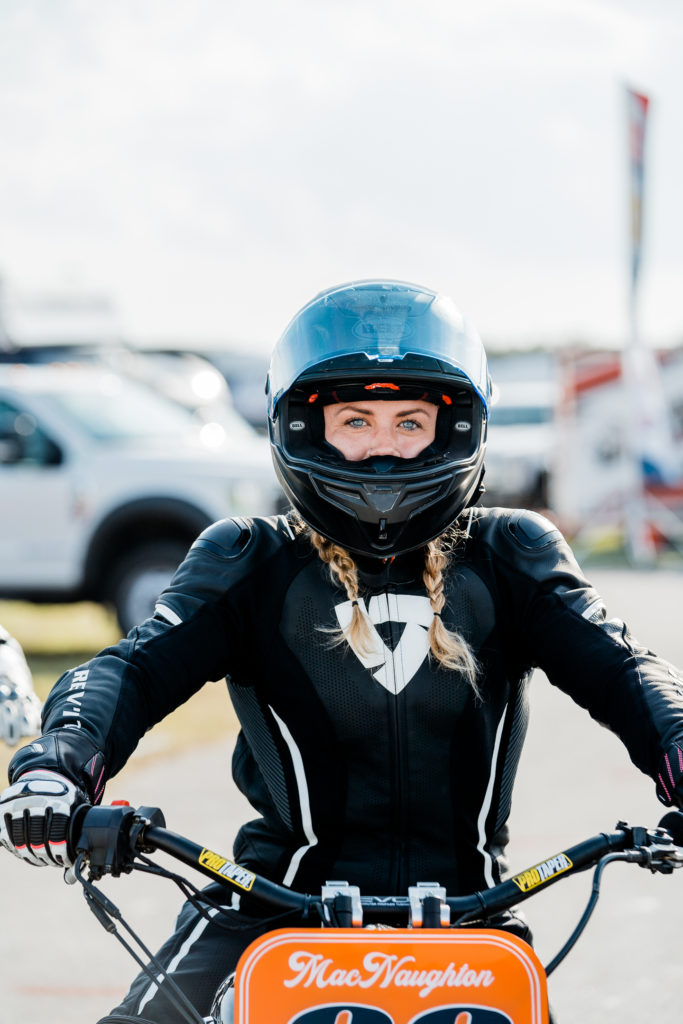
WR: Tell me a little bit about your experience with motorcycles. How did you first get started riding and how old were you when you got your start? Who or what inspired you to ride?
ML: My partner of 11 years would always take me on rides when we first started dating. Finally, one day I told him that I wanted to ride next to him, not behind. I was a broke kid starting college, so we found a shitty little Honda for dirt cheap that didn’t run. We built the bike up together and got it road worthy. I learned a lot from that bike. Since then I’ve had a lot of different motorcycles which have all taught me something. In the past few years, I’ve gotten more into dirt biking and the racing aspect of motorcycles.
WR: At what point did you decide that you wanted to race?
ML: My desire to race started when I transitioned from street riding to dirt. I signed up for a local motocross race after going to the track on the weekends. I wanted to push myself to see how well I could do, though I had just gotten into MX. I’ve never considered myself a competitive person, but I love experiences. So any time there is a race at an event, like Mama Tried, Flat out Friday, or the One Show, I like to sign up just to see how much I’ve progressed from the year before.
WR: How did you get involved in the BTR program, and how were you feeling when you found out what you’d be doing with Royal Enfield?
ML: I was originally asked to participate in the program when it first began. Unfortunately, the timing wasn’t right for me and I reluctantly had to turn the opportunity down. A year later, there was an opening and I applied. I wasn’t chosen, but I knew there was a reason. The Atlanta race happened and I was so stoked to watch all the ladies hard work come to fruition. For the Daytona race, there were two openings, so Bree reached out to me and I gladly said yes to the opportunity before she even gave details on dates or where. I was just so excited to join the program and hang out with all of the ladies on the team.
WR: Let’s talk about the bikes. Walk me through how you decided to customize your bike for flat track racing. Did you have someone helping you out?
ML: I did not get to customize a bike for this event, but I was lucky enough to ride Lana’s RE build, which I loved!
WR: At what point did you start taking your bike out on a track and preparing to actually race it?
ML: My first time riding the bike was at Johnny Lewis’ track the day before the Daytona Race. So not much time to get acquainted with the bike, but enough that I was excited for the race the following day.
WR: Obviously, Moto Anatomy’s Johnny Lewis was a huge part of this program. Tell me a little bit about his training, how it helped you, what you learned, and how important that was when it was finally time to race.
ML: Johnny is the man! I was actually lucky enough to take a course with him two years prior and learned a lot that I implement now. It was also super helpful for me in entering this experience so late in the game. I think the first lap out for practice at Daytona, I blanked on everything he had said. But in qualifying it all clicked and I was able to lock down my form.
WR: What was it like the first time you got to race each other? Were you nervous, or ready to go? If you won, how did that feel?
ML: My first race was in Daytona. I never really got nervous because in the end these girls are my friends and I would be excited for any of them regardless of if they beat me or not. I’m out there cheering them on and racing myself and my best times. From the moment Bree asked me to join I was ready to go and excited for the experience!
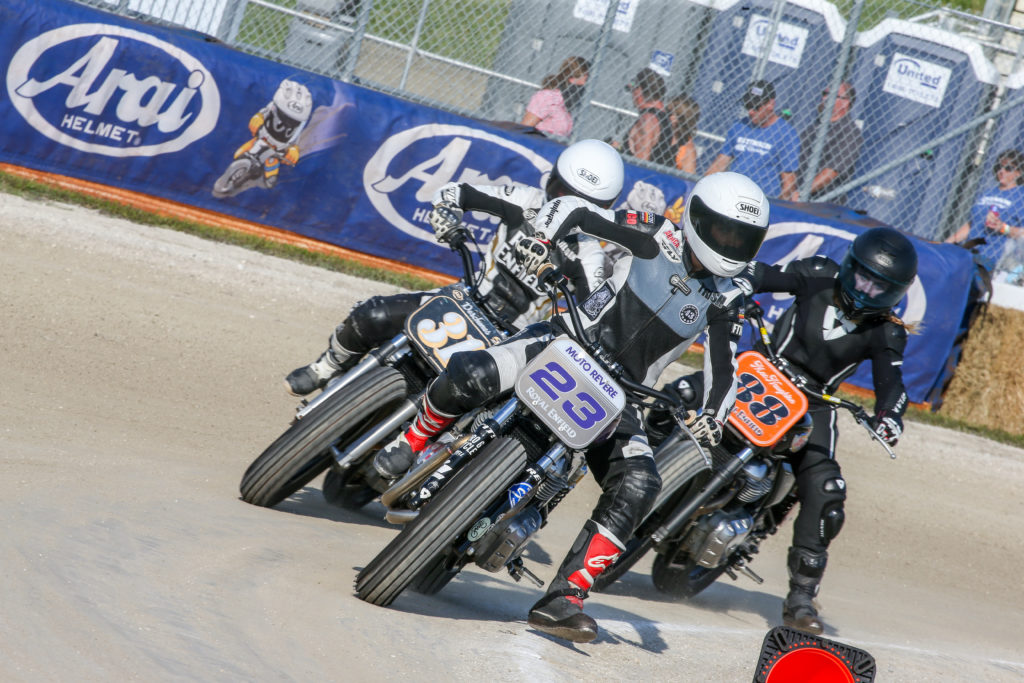
WR: Tell me about the atmosphere working with the Royal Enfield team, Johnny Lewis, and the other ladies in this program.
ML: SO AMAZING! I love everyone on the RE team; the ladies, the crew, the Lewis fam…everyone. They all want to watch you succeed. They answer your questions with thoughtfulness and they are there to help you every step of the way. There is no better experience than this!
WR: What are a few of the best memories you have from this whole experience?
ML: How do you narrow it down? Spending time with the RE team, getting to know everyone better, actually riding the Daytona track, and cheering on my friends were my highlights.
WR: How excited are you to do this again next year?
ML: There are no words to describe the amount of excitement!
WR: What advice would you give to other women out there considering building a bike or learning how to race?
ML: Don’t be afraid to ask questions along the way! Building a race bike is tough and it’s a constant learning process. Work on suspension over looks; it’s a race bike you’re probably going to lay it down eventually. Most importantly, just get out there. The first step is always starting and it takes a lot of guts to go out on a big bike and rip it. Seat time is key in progression and there are no bad track days, just learning experiences.
Kerry Sano
Kerry Sano, from Brookyln, New York, jumped in to ride for Andrea Lothrop, who was unable to make the exhibition races from Canada due to Covid-19 travel restrictions. Dreaming of building race bikes, Sano has spent more than 15 years working on bikes, including time spent working at a performance shop in San Francisco, CA. She then moved to London, UK, where she studied conceptual art, then moved back to New York City where she eventually decided to open her own motorcycle service and repair shop, Velocita.
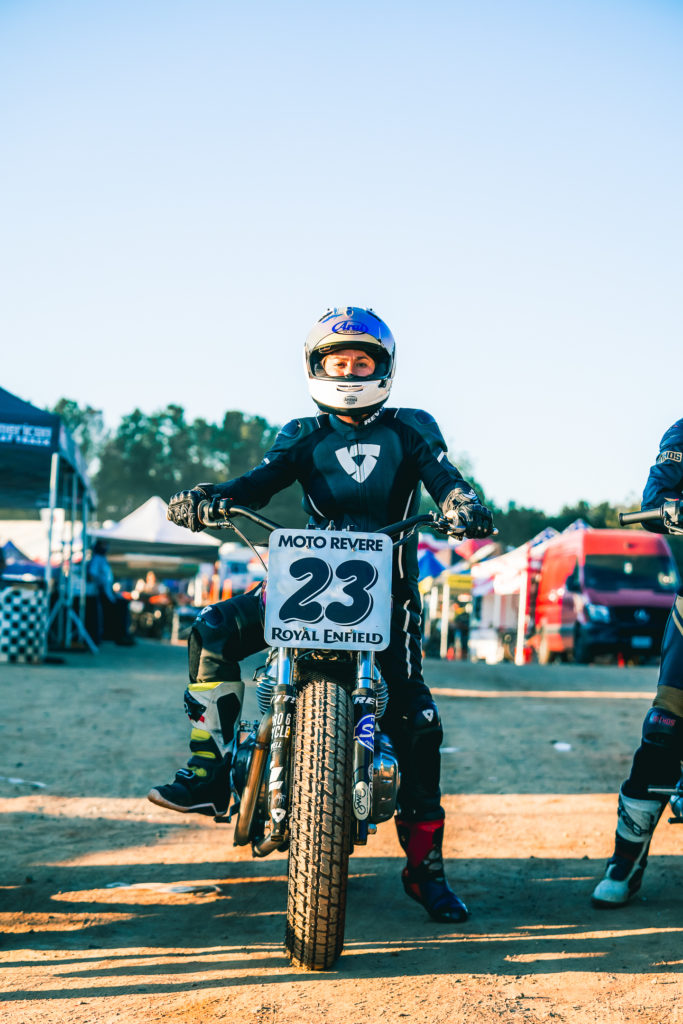
WR: Tell me a little bit about your experience with motorcycles. How did you first get started riding and how old were you when you got your start? Who or what inspired you to ride?
KS: I’ve been riding for close to 20 years. I started in my 20s and was working in the motorcycle industry as a mechanic. I inspired me to ride!
WR: At what point did you decide that you wanted to race?
KS: I have been racing on and off since I started riding. I have always been competitive and when I was younger it was a very strong drive. These days, less so. Hehe!
WR: How did you get involved in the BTR program, and how were you feeling when you found out what you’d be doing with Royal Enfield?
KS: I came in as an alternative rider. One of the women wasn’t able to make it to the races due to Covid. I found out about the opening and applied.
WR: Obviously, Moto Anatomy’s Johnny Lewis was a huge part of this program. Tell me a little bit about his training, how it helped you, what you learned, and how important that was when it was finally time to race.
KS: I rode with Johnny about four years ago when he first started teaching. I’ve always had a love for flat track so it was a no brainer to go down to Florida and ride with him. I did another school with him right before the races and he got me back into the mindset of riding on a track not just riding. Thinking about proper body position and going faster is his way, and it’s good to be pushed.
WR: What was it like the first time you got to race each other? Were you nervous, or ready to go? If you won, how did that feel?
KS: I loved racing with the other women. It was really good fun to get in there and meet them and then race with them. There was competition, but also camaraderie.
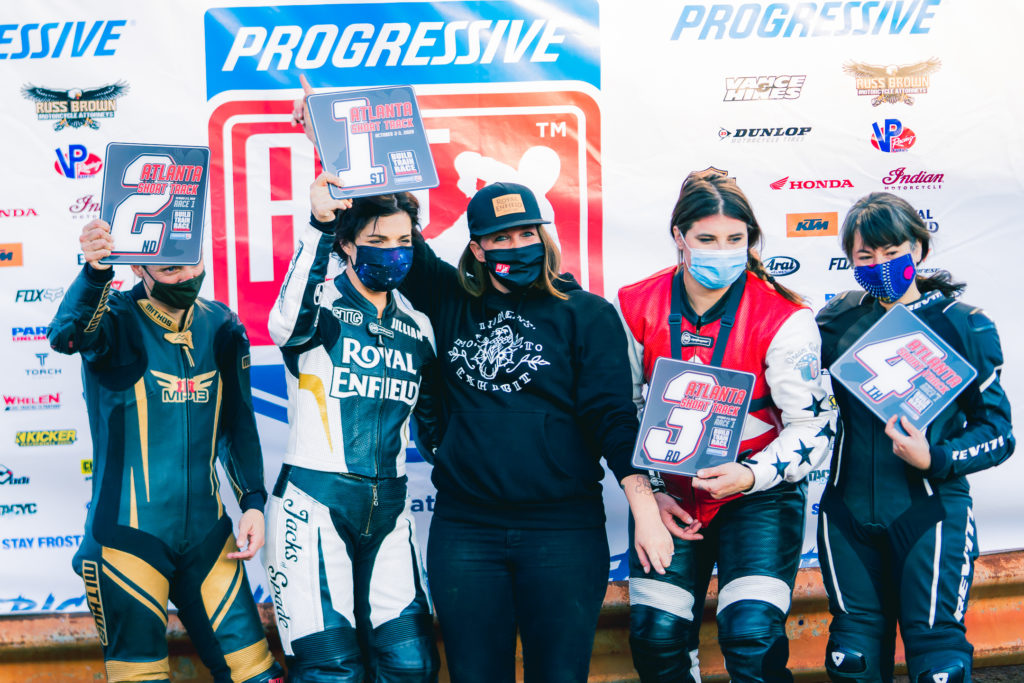
WR: Tell me about the atmosphere working with the Royal Enfield team, Johnny Lewis, and the other ladies in this program.
KS: Everyone was so helpful and supportive. I would love to work with them in the future. I have been in the motorcycle world for a long time championing women, but it was nice to see this big jump forward. Bree has been wonderful to work with because she is really taking it to the next level. There are not many female executives working for major brands who can do what she is doing. Everyone who has been a part of this is on the same page, so it’s been nothing short of thrilling to finally see.
WR: What are a few of the best memories you have from this whole experience?
KS: I had so much fun being flown in and riding with the pros. It would have been a dream to be able to do more events.
WR: How excited are you to do this again next year?
KS: I would love to do it next year too!
WR: What advice would you give to other women out there considering building a bike or learning how to race?
KS: I love racing. I think everyone should try it! It’s so much fun. It can be intimidating, but don’t let that hold you back.
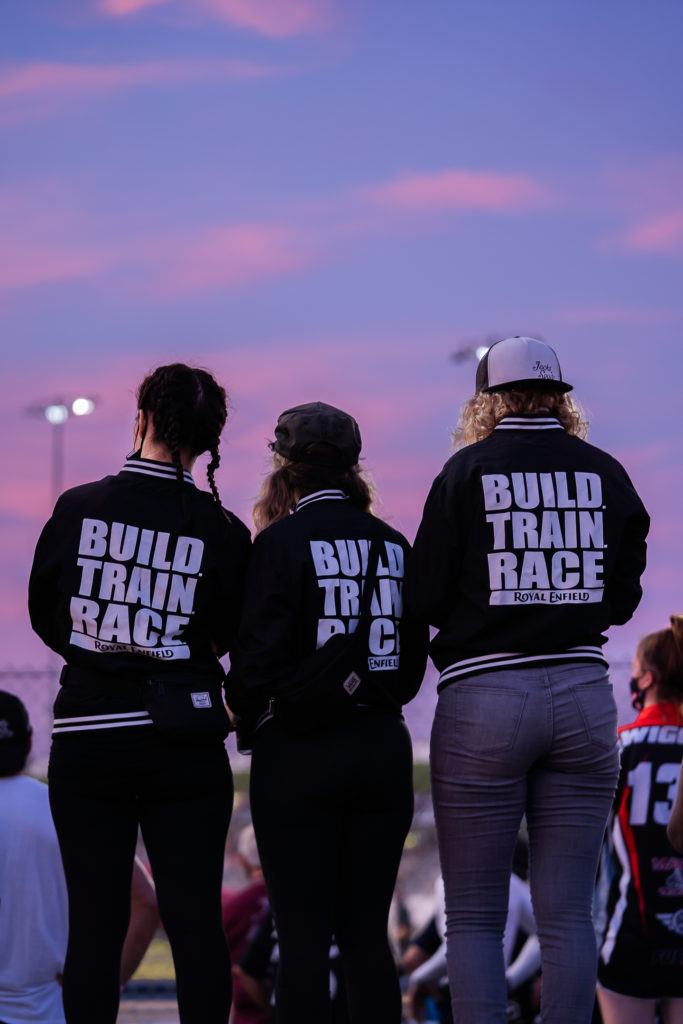


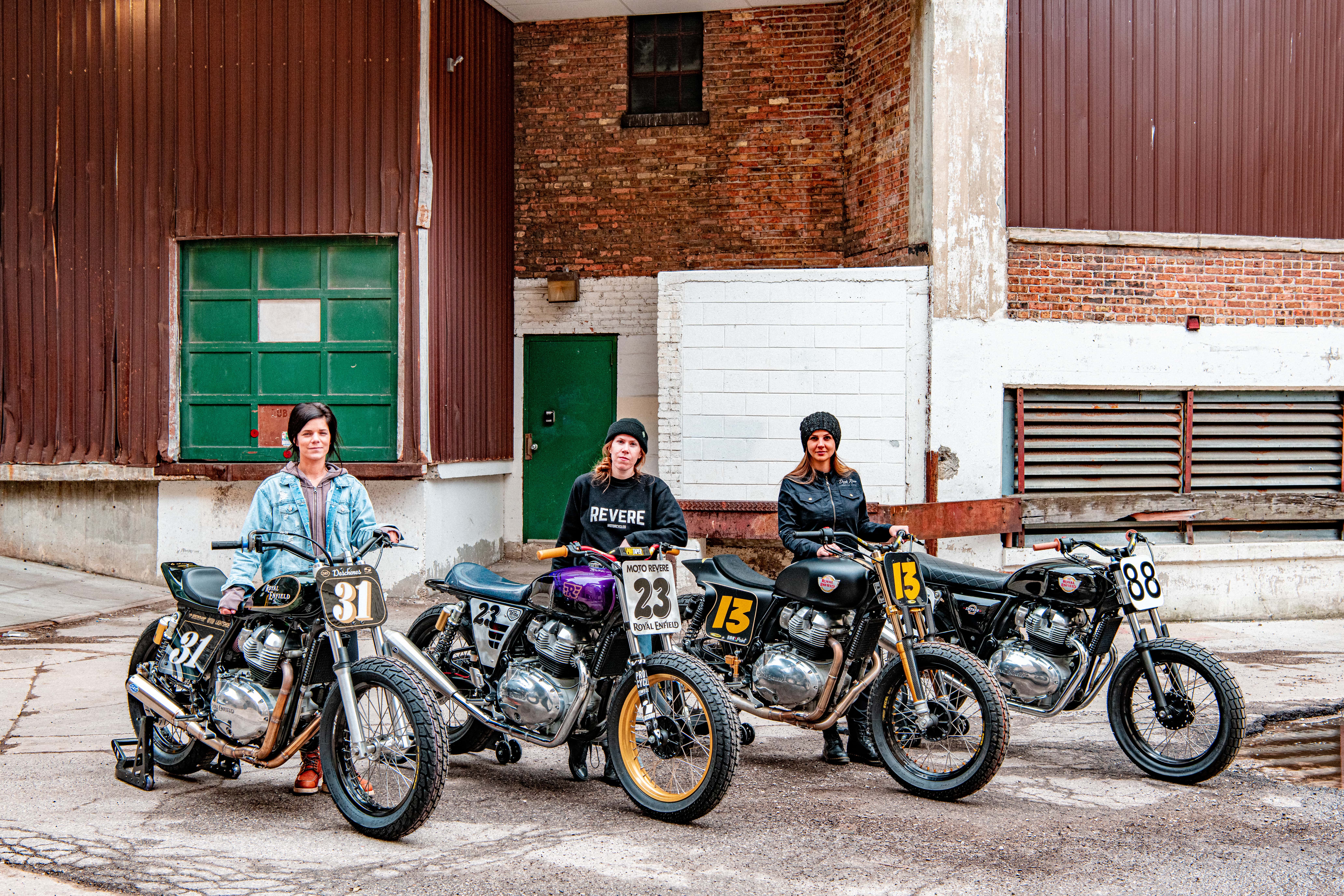

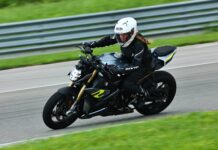



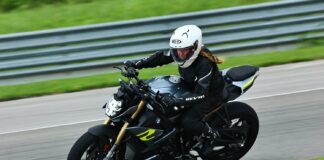
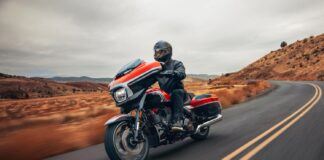
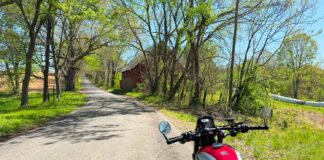
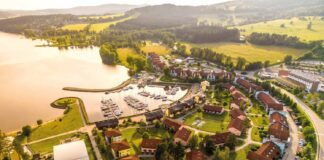
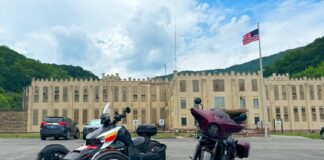

[…] Our sister publication, Woman Rider, has published an in-depth feature about the BTR program and its all-female flat track race team. […]
[…] Our sister publication, Woman Rider, has published an in-depth feature about the BTR program and its all-female flat track race team. […]